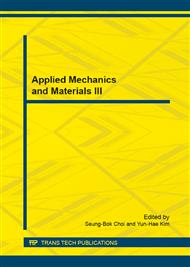p.540
p.544
p.551
p.556
p.561
p.565
p.570
p.575
p.583
Temperature Field Measuring and Simulation of CMSX-6 Superalloy during Directional Solidification
Abstract:
A three-dimensional model of CMSX-6 superalloy coupons was built in the paper, temperature field was calculated with software ProCAST. The temperature values of coupons were indicated from the measurement at the rate of 3 mm min-1 withdrawal velocity during directional solidification process, and the temperature gradient of different location of the coupons were calculated. It turned out that: the simulated results and the measured results are in good agreement; due to the different medial and lateral affected by radiation, isotherms showed sloped distributions in the process of the withdrawal; the temperature gradient of the measured positions in the coupons which are 10 mm, 50 mm, 100 mm, 150 mm far from the copper chill, are 8.0 Kmm-1, 3.0 Kmm-1, 2.5 Kmm-1, 1.8 Kmm-1 respectively.
Info:
Periodical:
Pages:
561-564
Citation:
Online since:
January 2015
Authors:
Keywords:
Price:
Сopyright:
© 2015 Trans Tech Publications Ltd. All Rights Reserved
Share:
Citation:


